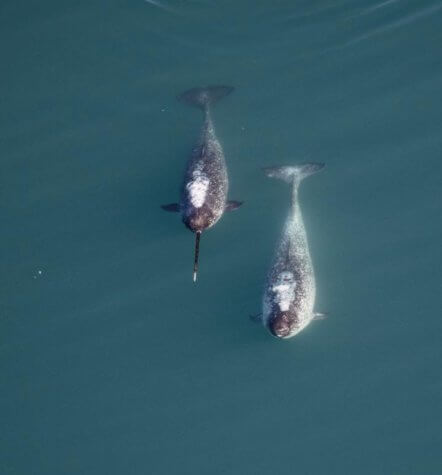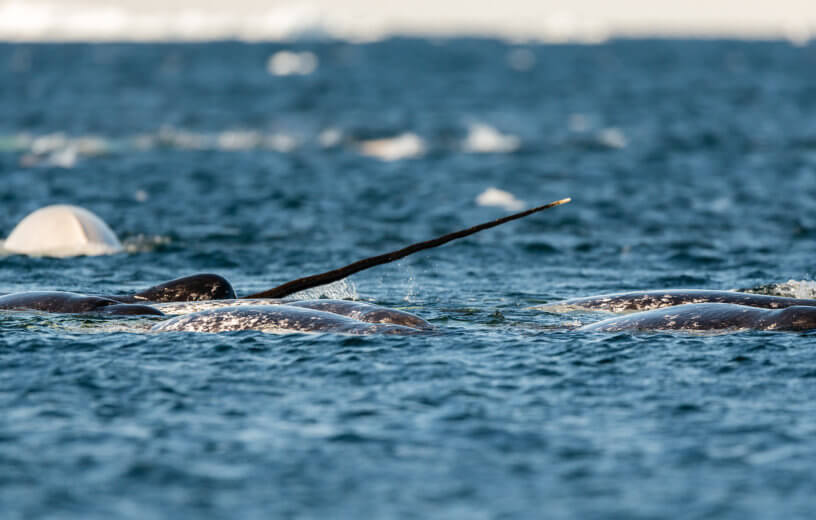WASHINGTON — Characterized by large tusks protruding from their heads, narwhals are mysterious, rarely seen, and heard even less often. Now, however, thanks to help from a group of Inuit hunters, a team of geophysicists have captured and recorded narwhal calls, clicks, whistles, and buzzes as they gathered in a Greenland fjord (a narrow passage of water surrounded by steep cliffs on both sides).
Narwhals’ shy nature is well documented, and actual recordings of their behaviors have been few and far between. These groundbreaking recordings will help modern science better understand their behaviors and patterns.

Besides just being very skittish, narwhals typically live deep within the freezing Arctic ocean, providing yet another reason why these animals are rarely seen. But, every summer they usually vacation to the fjords of Greenland and Canada. Even then, though, scientists still have difficulties getting close enough to them to make meaningful observations. These fjords, surrounded by glacier fronts, are hard to enter and not exactly safe, plus narwhals almost always swim away when they hear a boat approaching.
Local Inuit hunters are better versed at approaching narwhals without scaring them away, so in July 2019 a team of researchers accompanied some hunters on a whale hunting expedition in Northern Greenland in hopes of studying narwhals.
Sure enough, via underwater microphones attached to their boats, narwhal social calls and foraging sounds were successfully recorded. The boats even got as close as 82 feet away from the narwhals, a notable accomplishment.

Narwhals’ Buzzes, Clicks, & Whistles: What Do They All Mean?
These recordings are already helping scientists establish a baseline of sounds within the narwhal community, and their observations revealed that narwhals travel closer to glaciers than previously believed and continue hunting for food in the summer.
“Their world is the soundscape of this glacial fjord,” says lead study author Evgeny Podolskiy, a geophysicist at Hokkaido University in Sapporo, Japan, in a statement. “There are many questions we can answer by listening to glacier fjords in general.”
Among the sounds captured were social calls and whistles, as well as clicks that narwhals use for echolocation (the inherent sonar also used by dolphins, bats, and some whales to move around and find food). The closer a narwhal gets to food, the faster they click, until eventually that fast clicking starts to sound like a buzz (similar to a chainsaw).
“If you approach and target these fast fish, you better know precisely where they are; you need to gather this information more frequently,” Podolskiy says.
Very few observation projects have seen narwhals hunting for food in the summer, so that fact that clicking noises were recorded this time around is very significant. The study’s authors were also surprised to see how close (about half a mile) the narwhals swam to nearby glaciers; these areas are super noisy and often dangerous.
“There is so much cracking due to ice fracturing and bubbles melting out… it’s like a fizzy drink underwater,” Podolskiy adds. “It seems we are dealing with animals living in one of the most noisy environments without having much trouble with that.”
The study is published in the Journal of Geophysical Research: Oceans.
